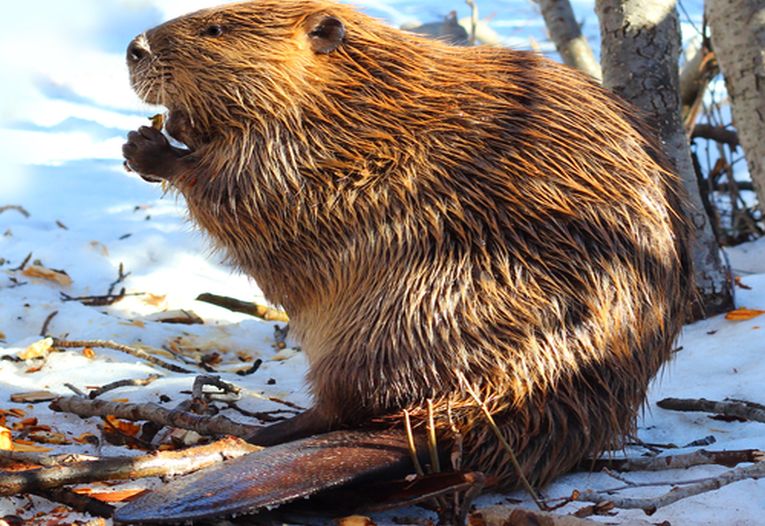The Middle/Upper Jurassic seems a dim distant time. Some of the more exciting Chinese fossils have recently shone light on the period, exemplified by amphibian, reptile, bird and mammalian fossils. We can now get some idea of the ecology of related geological sites in NE China. The name given to the long-dead inhabitants of this previously untouched locality is the Daohugou Biota.
The preservation of these varied fossils is the key to their importance. Feathers, fur, skin and even the soft external gills of salamanders can be clearly seen. Paul Barret of the Natural History Museum of London declares, "Daohugou is proving to be one of the key sites for understanding the evolution of feathered dinosaurs, early mammals, and flying reptiles, due largely to the fantastic levels of preservation. Many of the fossils are stunning and offer vast amounts of information. There are only a handful of similar sites elsewhere in the world and this article represents the first comprehensive attempt to draw all of the relevant information together into a single benchmark paper."
The early age of the specimens precedes the more famous Jehol Biota (142 species) in the vicinity .These fossils belong the Early Cretaceous period, 30 million years later, and seem quite different although several workers try to argue very late dates for the Daohugou Biota too. The earliest known lizard is a lepidosaur from Daohugou, while many unusual pterosaur species, including insectivores like Jeholopterus flew the skies.
The dinosaurs included the feathered theropods, Anchiornis and Xiaotingia, but scientists are pleased to have the huge variety of animal species, rather than one large reptile on which to concentrate. Instead Corwin Sullivan, Yuan Wang, David W. E. Hone, Yuanqing Wang, Xing Xu & Fucheng Zhang wrote their "fantastic" paper in The Journal of Vertebrate Paleontology .
The mammals include our beaver look-alike, Castorocauda. His tail is certainly reminiscent of Castor, the beaver. A platypus relative may be more accurate, but the relationships are more important than the accuracy to us! There is a squirrel-like Volaticotherium which might have glided through the tree-ferns in a similar fashion to modern gliders. It has its own order however, and has no living relatives that we know. There are other small mammals with at least one eutherian (maybe a placental). This is a famous find, as Juramaia is the earliest relative of placental mammals.
While dead animals and plants seem to bear little relation to more obvious interests such as saving current species, there is a connection. Global warming took place many times and survival has always been the name of the evolution game. The more we know about a species and its relatives' history, especially now we can extrapolate back using genome information, the more we can understand how to conserve them now.
30 vertebrates occur among the Daohugou Biota from salamanders to early mammals. Here is the fossil relevant to our beaver photograph at the top:

Castorocauda - a mammal that may have been able to swim using its beaver-like tail is shown preserved here with 'scale-like' skin; Tail of the holotype of the docodont mammaliaform Castorocauda lutrasimilis (JZMP 04-117) Credit: © Society of Vertebrate Paleontology










